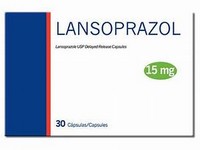Lansoprazole
CLINICAL USE
Gastric acid suppression
DOSE IN NORMAL RENAL FUNCTION
15–30 mg daily in the morning; duration dependent on indicationZollinger-Ellison syndrome: initially 60 mg daily; adjust according to response (if >120 mg, give in 2 divided doses)
PHARMACOKINETICS
DOSE IN RENAL IMPAIRMENT
GFR (mL/MIN)
DOSE IN PATIENTS UNDERGOING RENAL REPLACEMENT THERAPIES
IMPORTANT DRUG INTERACTIONS
Potentially hazardous interactions with other drugs
ADMINISTRATION
Reconstition
–
Route
Oral
Rate of Administration
–
Comments
–
OTHER INFORMATION
Lansoprazole is metabolised substantially by the liver; no dose adjustment is necessary in renal impairment

